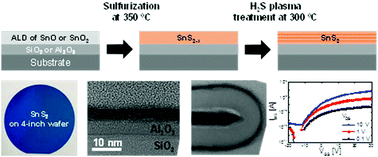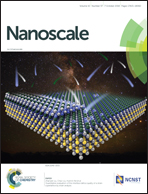Low-temperature wafer-scale synthesis of two-dimensional SnS2†
Abstract
Research on two-dimensional (2D) metal dichalcogenides is rapidly expanding owing to their unique characteristics that do not exist in bulk materials. The industrially compatible development of these emerging materials is indispensable to facilitate the transition of 2D metal dichalcogenides from the research stage to the practical industrial application stage. However, an industrially relevant method, i.e., the low-temperature synthesis of wafer-scale, continuous, and orientation-controlled 2D metal dichalcogenides, still remains a significant challenge. Here, we report the low-temperature (≤350 °C) synthesis of uniform and continuous n-type SnS2 thin films via the combination of atomic layer deposition (ALD) of tin oxides and subsequent sulfurization. Well-crystallized and aligned SnS2 layers parallel to the substrate are demonstrated through the phase engineering of the ALD-grown tin oxide and the substrate surface. The additional H2S plasma treatment at 300 °C leads to the formation of stoichiometric SnS2. The formation of conformal SnS2 layers over a three-dimensional undulating hole structure is confirmed, which reveals the potential for applications beyond the planar structured architecture. The present results could be a step toward the realization of 2D metal dichalcogenides in industry.



 Please wait while we load your content...
Please wait while we load your content...